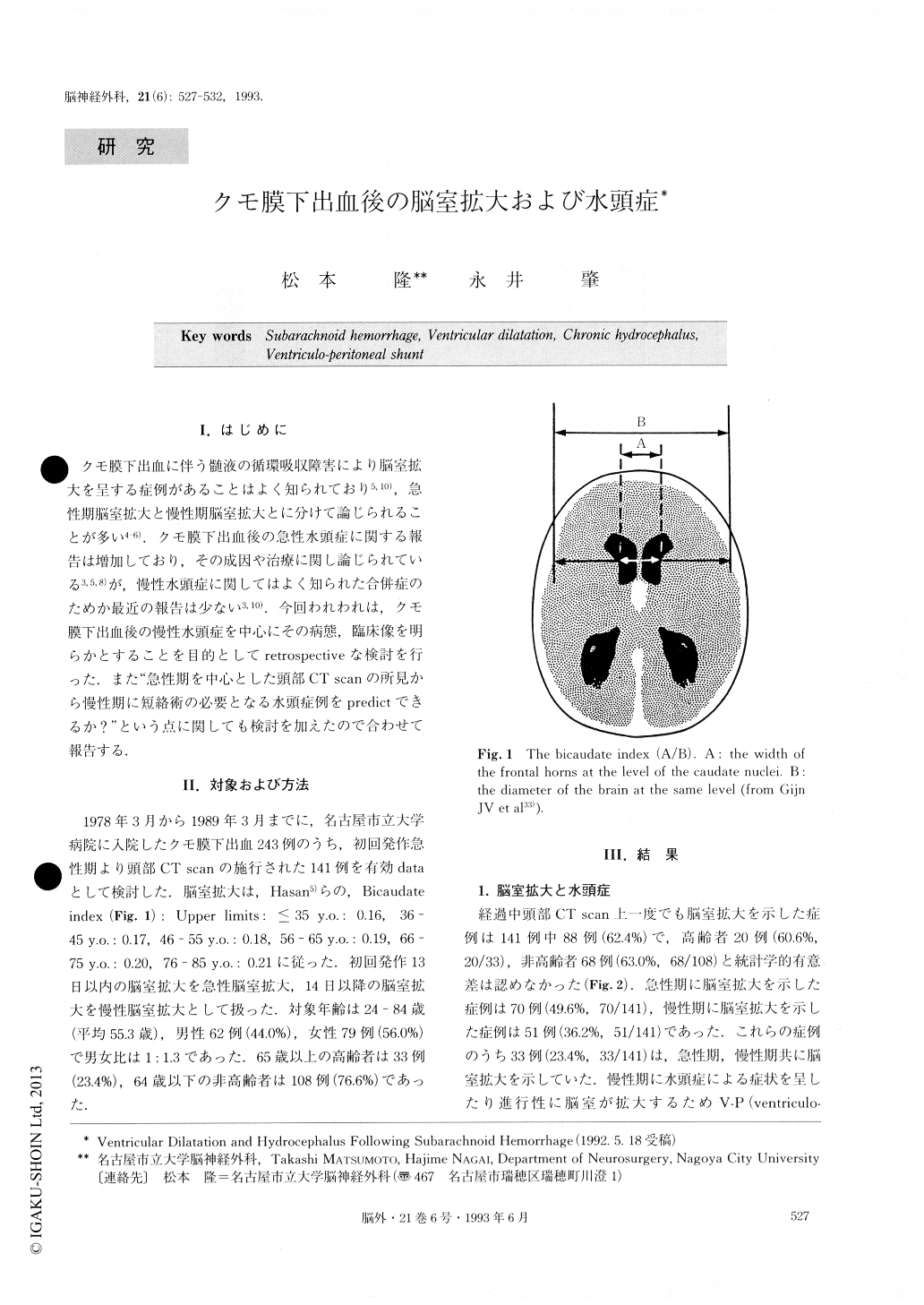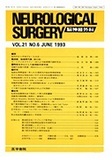Japanese
English
- 有料閲覧
- Abstract 文献概要
- 1ページ目 Look Inside
I.はじめに
クモ膜下出血に伴う髄液の循環吸収障害により脳室拡大を呈する症例があることはよく知られており5,10),急性期脳室拡大と慢性期脳室拡大とに分けて論じられることが多い4-6).クモ膜下出血後の急性水頭症に関する報告は増加しており,その成因や治療に関し論じられている3,5,8)が,慢性水頭症に関してはよく知られた合併症のためか最近の報告は少ない3,10),今回われわれは,クモ膜下出血後の慢性水頭症を中心にその病態,臨床像を明らかとすることを目的としてretrospectiveな検討を行った.また“急性期を中心とした頭部CT scanの所見から慢性期に短絡術の必要となる水頭症例をpredictできるか?”という点に関しても検討を加えたので合わせて報告する.
A retrospective study of the clinical aspects of chronic hydrocephalus was undertaken by examining 141 pa-tients with subarachnoid hemorrhage (SAH). To predict, in particular, the incidence of chronic hydrocephalus af-ter SAH, prediction tree techniques were employed. In the chronic stage, only 5.7% of ruptured middle cerebral artery (MCA) aneurysm and SAH cases of unknown ori-gin needed a shunt operation for chronic hydrocephalus. Also, of ruptured anterior cerebral artery (ACA), inter-nal carotid artery (ICA) and vertebro basilar artery (V-B) aneurysm cases which showed no acute ventricular dilatation, only 7.5% developed chronic hydrocephalus. On the other hand, 22.9% of the ACA, ICA, and V-B aneurysm cases, which showed acute ventricular dilata-tion, became chronic hydrocephalus (P<0.001). In cases of ACA, ICA and V-B aneurysm with acute ventricular dilatation, the presence of a periventricular lucency (PVL) was a good indicator of chronic hydrocephalus. 55.8% of PVL positive cases became chronic hy-drocephalus. However, only 3.3% (P<0.001) of PVL ne-gative cases developed it. From these data, the prediction of chronic hydrocephalus after SAH was possible from a) the site of the ruptured aneurysm, b) the existence of the acute ventricular dilatation, c) the existence of the PVL during the follow-up period.

Copyright © 1993, Igaku-Shoin Ltd. All rights reserved.


